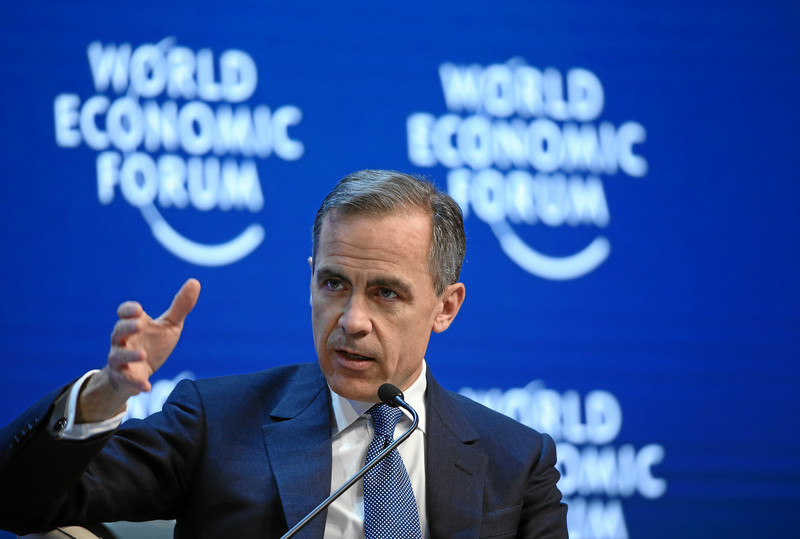Energy
Courts expose Ottawa’s green overreach

From the Fraser Institute
It has been a rough autumn for the Trudeau government. First, the Supreme Court of Canada struck down significant parts of the federal Impact Assessment Act (also known as Bill C-69), ruling the act to be broadly unconstitutional and finding that the government had made the review process ambiguous and overly broad while intruding on provincial authority. Then last week, Canada’s Federal Court struck down the Trudeau government’s ban on single-use plastics finding the government’s classification of “plastic manufactured items” (PMI) as toxic materials under the Canadian Environmental Protection Act (CEPA) to be unsound.
And yet, the Trudeau government has already signalled the next stage in its crusade against plastics. Having banned a limited set of plastics-of-convenience (straws, cutlery, etc.), it plans to ban plastic films and containers used up and down the food chain to keep foods isolated from contamination, protected from pests and destructive oxidation, and cold, which is critical to preventing microbial contamination and spoilage.
One can hope that this second court strike will lead the government to reconsider and preferably scrap its entire “Zero Plastic Waste by 2030” plan, which is deeply flawed. As I showed in a 2022 study published by the Fraser Institute, Canada does not have a significant plastic waste problem. Less than 1 per cent of plastics used in Canada end up as waste in the environment while 99 per cent is safely buried in landfills, recycled or incinerated. Canada is not a measurable part of the world’s plastic pollution problem.
Moreover, the government’s own analysis suggests that pursuing this war on plastics will ultimately lead to greater waste of alternative materials, raising concerns among environmentalists. Even if the Trudeau government’s “Zero Plastic” plan were to work, it would produce an undetectable reduction in the growth of global plastic pollution of three thousandths of one per cent. Remember, this is by the government’s own admission.
And even that small reduction in environmental harm will likely be offset by increased environmental harms due to replacements for the plastic products banned by the government. Again, per the government’s own analysis, “Zero Plastic” regulations are expected to increase the waste generated from substitutes by almost 300,000 tonnes in 2024 and by around 2.9 million tonnes over the full life of the plan (2023 to 2032), mainly driven by paper substitutes.
Bottom line—the Trudeau government’s anti-plastic regulations would keep about 1.5 million tonnes of plastics from entering the waste stream over the course of the program, but would add about 2.9 million tonnes of other materials to the waste stream from the use of substitutes. And increase the costs of waste management in Canada.
The government should take a hint from the two recent court rulings—which found two of its signature environmental initiatives unconstitutional, unreasonable and ill-founded—and take both the Impact Assessment Act and the “Zero Plastic Waste by 2030” plan back to the drawing board. Of course, given federal Environment Minister Steven Guilbeault’s reaction to the Supreme Court ruling—basically, the government doesn’t think it’s doing anything wrong and does not intend to change course—this government is unlikely to make serious efforts at compliance with the new court ruling on plastics. Serious reform will likely have to wait for a change in government.
Author:
Business
Carney and other world leaders should recognize world’s dependence on fossil fuels

From the Fraser Institute
By Julio Mejía and Elmira Aliakbari
Simply put, despite trillions invested in the energy transition, the world is more dependent on fossil fuels today than when the United Nations launched its first COP. No wonder that ahead of COP30, leading voices of the net-zero-by-2050 agenda, including Bill Gates, are acknowledging both the vital role of fossil fuels on the planet and the failure of efforts to cut them.
On the heels of his first federal budget, which promises more spending to promote a “green economy,” Prime Minister Carney will soon fly to Brazil for COP30, the 30th United Nations climate summit. Like the former Trudeau government, the Carney government has pledged to achieve “net-zero” emissions in Canada—and compel other countries to pursue net-zero—by 2050. To achieve a net-zero world, it’s necessary to phase out fossil fuels—oil, natural gas, coal—or offset their CO2 emissions with technologies such as “carbon capture” or large-scale tree planting.
But after trillions of dollars spent in pursuit of that goal, it appears more unrealistic than ever. It’s time for world leaders, including Canada’s policymakers, to face reality and be honest about the costly commitments they make on behalf of their citizens.
For starters, carbon capture—the process of trapping and storing carbon dioxide so it’s unable to affect the atmosphere—is a developing technology not yet capable of large-scale deployment. And planting enough trees to offset global emissions would require vast amounts of land, take decades to absorb significant CO2 and risk unpredictable losses from wildfires and drought. Due to these constraints, in their net-zero quest governments and private investors have poured significant resources into “clean energy” such as wind and solar to replace fossil fuels.
According to the International Energy Agency (IEA), from 2015 to 2024, the world’s public and private investment in clean energy totalled and estimated US$14.6 trillion (inflation-adjusted). Yet from 1995 (the first COP year) to 2024, global fossil fuel consumption increased by more than 64 per cent. Specifically, oil consumption grew by 39 per cent, natural gas by 96 per cent and coal by 76 per cent. As of 2024, fossil fuels accounted for 80.6 per cent of global energy consumption, slightly lower than the 85.6 per cent in 1995.
The Canadian case shows an even greater mismatch between Ottawa’s COP commitments and its actual results. Despite billions spent by the federal government on the low-carbon economy (electric vehicle subsidies, tax credits to corporations, etc.), fossil fuel consumption in our country has increased by 23 per cent between 1995 and 2024. Over the same period, the share of fossil fuels in Canada’s total energy consumption climbed from 62.0 to 66.3 per cent.
Simply put, despite trillions invested in the energy transition, the world is more dependent on fossil fuels today than when the United Nations launched its first COP. No wonder that ahead of COP30, leading voices of the net-zero-by-2050 agenda, including Bill Gates, are acknowledging both the vital role of fossil fuels on the planet and the failure of efforts to cut them.
Why has this massive effort, which includes many countries and trillions of dollars, failed to transition humanity away from fossil fuels?
As renowned scholar Vaclav Smil explains, it can take centuries—not decades—for an energy source to become globally predominant. For thousands of years, humanity relied on wood, charcoal, dried dung and other traditional biomass fuels for heating and cooking, with coal only becoming a major energy source around 1900. It took oil 150 years after its introduction into energy markets to account for one-quarter of global fossil fuel consumption, a milestone reached only in the 1950s. And for natural gas, it took about 130 years after its commercial development to reach 25 per cent of global fossil fuel consumption at the end of the 20th century.
Yet, coal, oil and natural gas didn’t completely replace traditional biomass to meet the surging energy demand as the modern world developed. As of 2020, nearly three billion people in developing countries still relied on charcoal, straw and dried dung to supply their basic energy needs. In light of these facts, the most vocal proponents of the global energy transition seem, at the very least, out of touch.
The world’s continued reliance on fossil fuels should prompt world leaders at COP30 to exercise caution before pushing the same unrealistic commitments of the past. And Prime Minister Carney, in particular, should be careful not to keep leading Canadians into costly ventures that lead nowhere near their intended results.
Daily Caller
McKinsey outlook for 2025 sharply adjusts prior projections, predicting fossil fuels will dominate well after 2050


From the Daily Caller News Foundation
A new report from McKinsey & Company, the “Global Energy Perspective,” lays bare what many of us – dismissed as “climate deniers” – have been asserting all along: Coal, oil and natural gas will continue to be the dominant sources of global energy well past 2050.
The McKinsey outlook for 2025 sharply adjusts prior projections. Last year, the management consultant’s models had coal demand falling 40% by 2035. Today, McKinsey projects an uptick of 1% over the same period. The dramatic reversal is driven by record commissioning of coal-fired power plants in China, unexpected increases in global electricity use, and the lack of viable alternatives for industries like steel, chemicals and heavy manufacturing.
The report states that the three fossil fuels will still supply up to 55% of global energy in 2050, a forecast that looks low to me. Today’s share for hydrocarbons is about 64%.
Dear Readers:
As a nonprofit, we are dependent on the generosity of our readers.
Please consider making a small donation of any amount here.
Thank you!
In any case, McKinsey’s report confirms what seasoned energy analysts and pragmatic policymakers have long maintained: The energy transition will not be swift, simple, or governed solely by climate targets. In fact, this energy transition will not happen at all without large scale deployment of nuclear, geothermal or other technological innovations that prove practical.
In places such as India, Southeast Asia and sub-Saharan Africa, the top energy priorities are access, affordability and reliability, which together add up to national security. Planners are acutely aware of a trap: Sole reliance on weather-dependent power risks blackouts, industrial disruption, economic decline and civil unrest.
That is why many developing nations are embracing a dual track: continued investment in conventional generation (coal, gas, nuclear) while developing alternative technologies. McKinsey says this in consultancy lingo: “Countries and regions will follow distinct trajectories based on local economic conditions, resource endowment, and the realities facing particular industries.”
In countries like India, Indonesia and Nigeria, the scale of electrification and industrial expansion is enormous. These countries cannot afford to wait decades for perfect solutions. They need “reliable and good enough for now.” That means conventional fuels will be retained.
McKinsey’s analysis also underscores what physics and engineering dictate: Intermittent and weather-dependent sources, such as wind and solar, require vast land areas, backup batteries and generation and power-grid investments, none of which come cheaply nor quickly.
The technologies of wind and solar branded as renewable should instead be called economy killers. They make for expensive and unstable electrical systems that have brought energy-rich nations like Germany to their knees. After spending billions of dollars on unreliable wind turbines and solar panels and demolishing nuclear plants and coal plants, the country is struggling with high prices and economic stagnation.
The Germans now have a word for their self-inflicted crisis: Dunkelflaute. It means “dark doldrums”—a period of cold, sunless, windless days when their “green” grid fails. During a Dunkelflaute in November 2024, fossil fuels were called on to provide 70% of Germany’s electricity.
If “renewables” were truly capable, planners would shut down fossil fuel generation. But that is not the case. While wind and solar are pursued in some places, coal and natural gas remain much sought-after fuels. In the first half of 2025 alone, China commissioned about 21 gigawatts (GW) of new coal-fired capacity, which is more than any other country and the largest increase since 2016.
Further, China has approved construction of 25 GW of new coal plants in the first half of 2025. As of July, China’s mainland has nearly 1,200 coal plants, far outstripping the rest of the world.
McKinsey points to a dramatic surge in electricity demand driven by data centers, which is estimated to be about 17 % annually from 2022 to 2030 in the 38 OECD countries. This kind of growth in electricity use simply cannot be met by wind and solar.
When analysts, journalists and engineers point out these realities, they’re branded as “shills” for the fossil fuel industry. However, it is not public relations to point out the physics and economics that make up the math for meeting the world’s energy needs. Dismissing such facts is to deny that reliable energy remains the bedrock of modern civilization.
The cost of foolish “green” policies is being paid in lost jobs, ruined businesses, disrupted lives and impoverishment that could have been avoided by wiser choices.
For those who have repeated energy realities for years, the vindication is bittersweet. The satisfaction of being right is tempered by the knowledge that many have suffered because reality has been ignored.
Vijay Jayaraj is a Science and Research Associate at the CO2 Coalition, Fairfax, Va. He holds an M.S. in environmental sciences from the University of East Anglia and a postgraduate degree in energy management from Robert Gordon University, both in the U.K., and a bachelor’s in engineering from Anna University, India.
-

 armed forces14 hours ago
armed forces14 hours agoIt’s time for Canada to remember, the heroes of Kapyong
-

 Housing2 days ago
Housing2 days agoTrump advancing 50-year mortgage to help more Americans buy homes
-

 International2 days ago
International2 days agoBBC boss quits amid scandal over edited Trump footage
-

 Digital ID14 hours ago
Digital ID14 hours agoCanada moves forward with digital identification for federal benefits seekers
-

 Frontier Centre for Public Policy2 days ago
Frontier Centre for Public Policy2 days agoNotwithstanding Clause Is Democracy’s Last Line Of Defence
-

 Agriculture1 day ago
Agriculture1 day agoBovaer Backlash Update: Danish Farmers Get Green Light to Opt Out as UK Arla Trial Abruptly Ends!
-

 Opinion1 day ago
Opinion1 day agoThe Germans called her the ‘White Mouse’ for her elusiveness
-

 Daily Caller2 days ago
Daily Caller2 days agoMcKinsey outlook for 2025 sharply adjusts prior projections, predicting fossil fuels will dominate well after 2050










